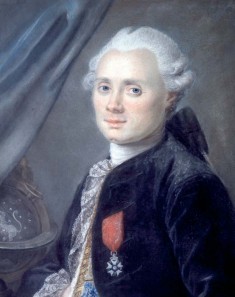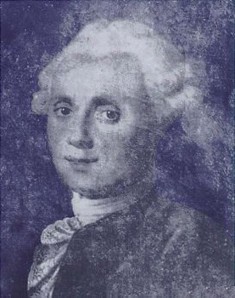| Charles Messier | |
|---|---|
 |
|
| Astronomer | |
| Specialty | Messier catalog |
| Born | June 26, 1730 Badonviller, France |
| Died | Apr. 12, 1817 (at age 86) Paris, France |
| Nationality | French |
Charles Messier was a French astronomer. He was particularly noted for producing a catalog of 110 star clusters and nebulae, which have come to be known as the Messier Objects. Messier produced the catalog in order that astronomers looking for new comets – of which he was one – would be able to distinguish them from other non-star objects in the night sky. Messier was somewhat protective of his discoveries and tended to resent other astronomers if they discovered comets before him.
Early Life
Messier was born in France’s Lorraine region, the tenth of 12 children, although six of his siblings died in infancy. When Messier was 11, his father died, but the boy’s interest was caught by the appearance of a spectacular comet in 1744. An annular solar eclipse, which was visible from his home town of Badonviller, also occurred in 1748.
Beginnings of a Career
In 1751, the young man went to Paris and worked as a draftsman and recorded for the astronomer, Joseph Delisle. He soon became an expert observer and around 1754, he accepted a clerk’s role at the Paris Marine Observatory.
Edmund Halley had predicted many years before that the comet which now bore his name would return in 1758, and astronomers throughout Europe were anticipating this event. Messier, using a chart prepared by Delisle, spent more than a year trying to make the first observation of the returning comet, but an unnoticed error in the chart meant that he had no success.
By the time he finally spotted the comet in January 1759, Messier had been beaten to it by more than a month by a German farmer, and the news reached Paris before Messier was able to announce his own discovery.
Expanding His List
 Delisle retired at about this time and Messier became the principal observer at the Hotel de Cluny, discovering an important comet in 1764. For a decade and a half, he became the foremost comet-hunter in the world, discovering the majority of important comets throughout that period.
Delisle retired at about this time and Messier became the principal observer at the Hotel de Cluny, discovering an important comet in 1764. For a decade and a half, he became the foremost comet-hunter in the world, discovering the majority of important comets throughout that period.
He also made detailed observations of other celestial phenomena, such as sunspots, eclipses, transits, and occultations. While looking for Halley’s Comet in 1758, he discovered another, but also an odd patch of white light near Zeta Tauri. This proved to be the Crab Nebula, which eventually became M1 on Messier’s famous list.
During the early 1760s, Messier discovered several dozen more of what he called “false comets,” including the Triffid Nebula, the Andromeda Galaxy, and the Hercules Cluster. While drawing up his list, he added a few objects from lists prepared by contemporary astronomers, including Halley himself.
By 1769, Messier had also fixed the locations of the Pleiades, the Orion Nebula, and several others. He was admitted to the Royal Academy of Sciences in 1770, which published his list of what was then 45 objects. Almost immediately, he discovered four new bodies.
Messier continued to search for comets throughout the 1770s, discovering several more objects for his list. In 1779, the brightest comet of the year passed across the Virgo constellation, and Messier’s observations in this area led to the discovery of several of the more prominent galaxies.
As was the case with Andromeda, however, these objects were universally classed as nebulae: it would be the 20th century before their status as galaxies external to our own would be fully decided. In 1780, Messier noted two more galaxies, and by the time the most important French almanac of the day was published, his list numbered 68.
Legacy and Death
In the early 1780s, Messier’s fellow French astronomer, Pierre Mechain, emerged as a rival. The much younger Mechain worked at the Paris archives for naval mapping, and discovered two comets in 1781. He also noted more than 30 nebulous objects which had not previously been described, and sent his findings to Messier.
The older man did not seem to have been jealous of Mechain’s findings, but instead simply added them to his own list. By April, the M-list had reached 100 objects, but in November of that year, Messier suffered serious injuries in a fall and was unable to make proper observations for a full year.
Messier’s list was re-published twice during the 1780s, and the final version in 1787 was edited by Mechain. Messier contributed some handwritten notes in the margin of one of the known copies, and these – along with a few descriptions from other sources – bring the modern total of Messier Objects to 110.
The astronomer himself suffered somewhat during the French Revolution, having his naval pension stripped from him. He discovered one further comet in 1793, but then concentrated on his election to the Academy of Sciences. Napoleon awarded him the Legion d’Honneur, and Messier himself died on April 12, 1817.